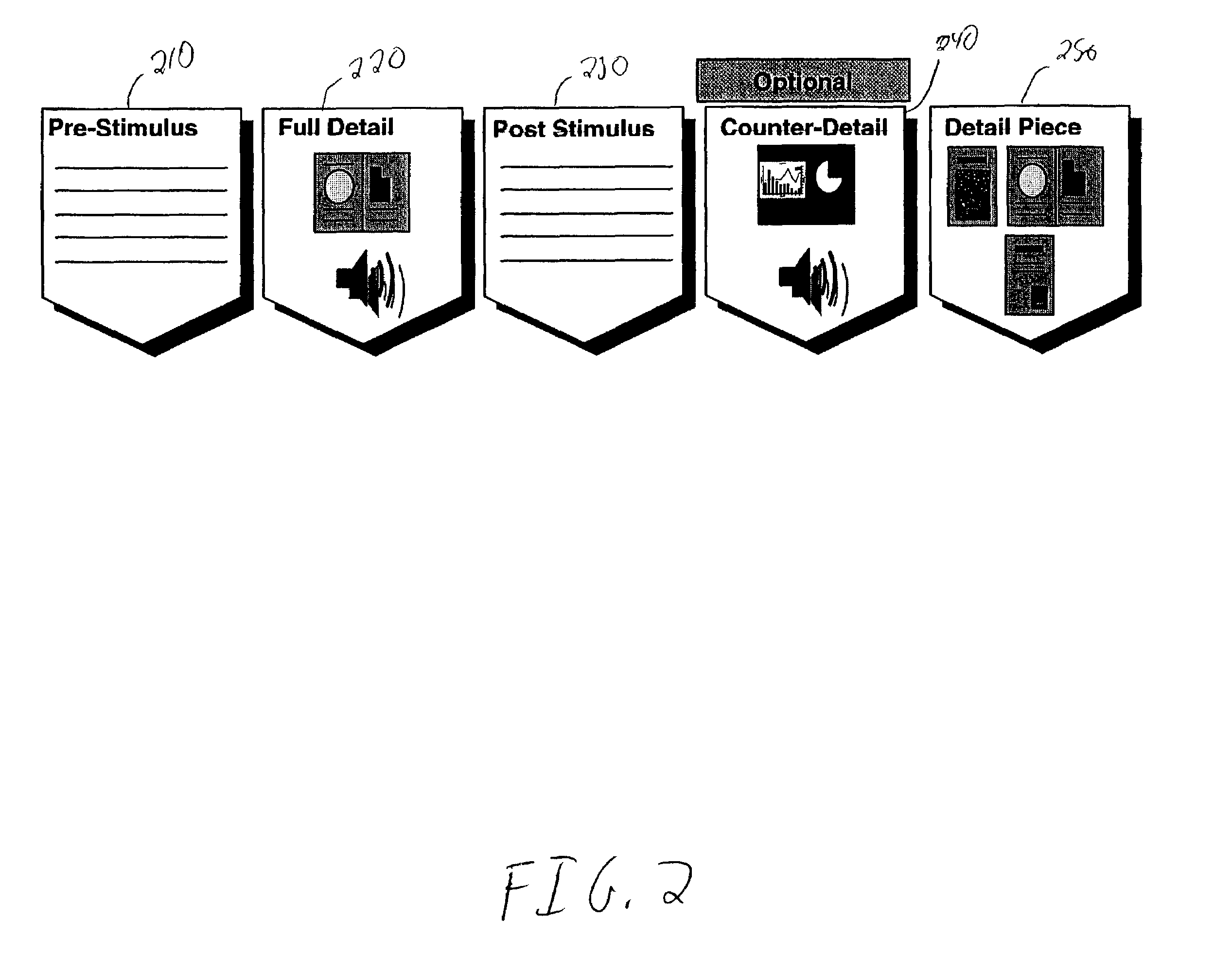Method and system for analyzing the effectiveness of marketing strategies
a marketing strategy and effectiveness analysis technology, applied in the field of marketing materials, can solve the problems of not fully assessing not being able to fully assess the effectiveness of the campaign prior, and being instinctively more difficult to be negative in front of another person, so as to improve the approximation of the actual environment and eliminate the variability of in-person testing
- Summary
- Abstract
- Description
- Claims
- Application Information
AI Technical Summary
Benefits of technology
Problems solved by technology
Method used
Image
Examples
Embodiment Construction
[0043]Embodiments of the invention include, separately or both in combination, two types of research surveys: a large, routinely fielded survey, referred to herein as the Detail Performance MonitorSM survey, which assesses changes in respondent attitudes across disciplines, for example, therapeutic areas; and a smaller, ad-hoc survey, referred to herein as the Detail AssessmentSM survey, which is run, for example, in parallel with the Detail Performance Monitor for a specific campaign. These two surveys may be utilized interdependently. The Detail Performance Monitor provides an in-depth understanding of the real-world impact of sales details on respondent consumer behavior, for example, prescribing behavior. The Detail Assessment uses these data obtained from the Detail Performance Monitor and applies them to, for example, an individual detail under consideration.
[0044]In one embodiment, for both the Detail Performance Monitor survey and the Detail Assessment survey, a group of res...
PUM
 Login to View More
Login to View More Abstract
Description
Claims
Application Information
 Login to View More
Login to View More - R&D
- Intellectual Property
- Life Sciences
- Materials
- Tech Scout
- Unparalleled Data Quality
- Higher Quality Content
- 60% Fewer Hallucinations
Browse by: Latest US Patents, China's latest patents, Technical Efficacy Thesaurus, Application Domain, Technology Topic, Popular Technical Reports.
© 2025 PatSnap. All rights reserved.Legal|Privacy policy|Modern Slavery Act Transparency Statement|Sitemap|About US| Contact US: help@patsnap.com



